Build Reusable Templates for Fiction Writers
- C. L. Nichols

- 1 day ago
- 2 min read
Plots, Characters, Chapters, Scenes, WorldBuilding, Submissions
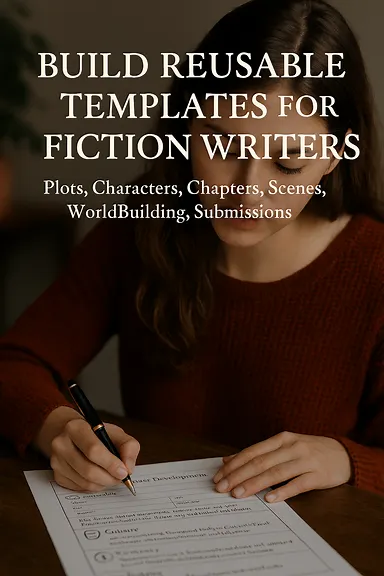
Writing fiction takes time, energy, and a lot of moving parts.
You juggle characters, plot twists, timelines, emotional arcs, and submission deadlines.
It’s easy to lose track of details or repeat work you’ve done. That’s where templates come in.
Templates help fiction writers stay organized, write faster, and keep their creative process consistent.
They’re practical tools that keep track of ideas, structure stories, and avoid starting from scratch every time. Build a template once, then reuse it for every new project.
Templates help spot gaps in your story. If your character sheet asks for a character’s motivation and you leave it blank, you need to dig deeper. If your plot outline skips the midpoint, you are missing a key turning point.
A character sheet defines your characters.
Name
Age
Physical description (height, hair, eyes, clothing style)
Personality traits (introverted, ambitious, anxious, etc.)
Backstory (childhood, major life events, trauma, relationships)
Motivations (what they want and why)
Fears
Strengths and weaknesses
Relationships (family, friends, enemies)
Speech style (formal, casual, sarcastic, etc.)
Role in the story (protagonist, antagonist, sidekick, etc.)
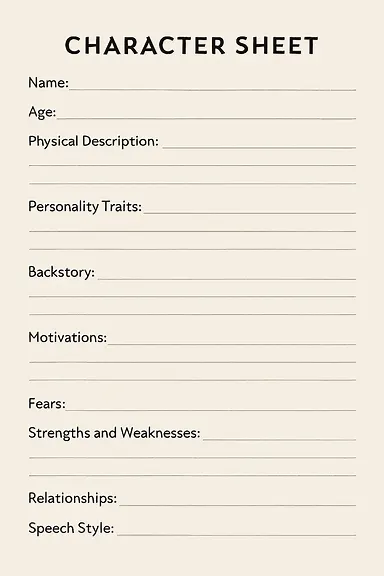
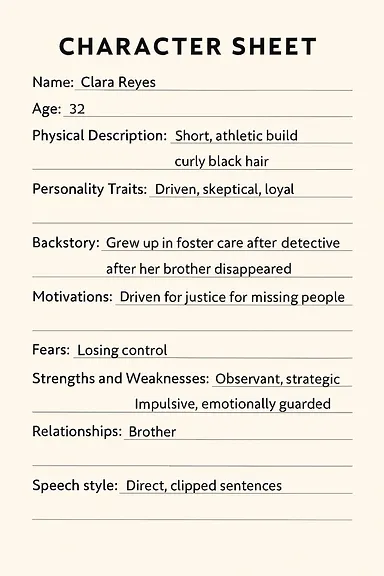
Plot templates map out your story before you write. You can use a simple three-act structure or a more detailed breakdown.
Three-Act Structure
Hero’s Journey
Save the Cat
Snowflake Method
Scene-by-Scene Breakdown
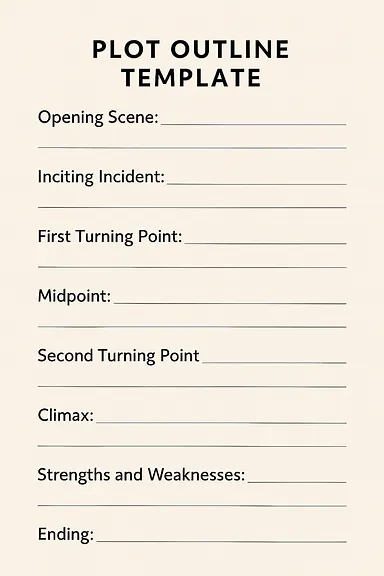
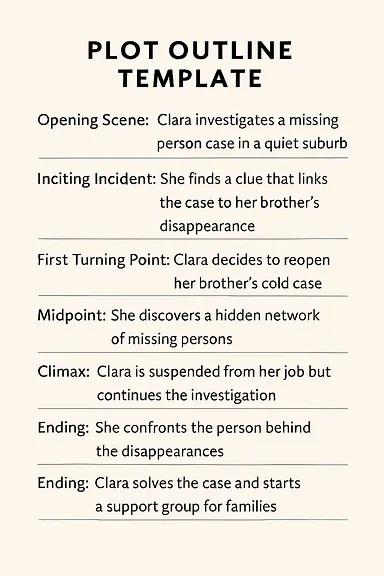
Basic Plot Outline Template:
Opening Scene (Introduce the main character and setting)
Inciting Incident (Something changes or disrupts the status quo)
First Turning Point (The character makes a decision or takes action)
Midpoint (A major reveal or shift in direction)
Second Turning Point (Stakes rise, conflict intensifies)
Climax (Final confrontation or resolution)
Ending (Wrap up loose ends, show character growth)
If you’re submitting stories to magazines, contests, agents, or publishers, a submission tracker is essential.
Story Title
Word Count
Genre
Submission Date
Publication Name
Contact Info
Status (submitted, accepted, rejected, pending)
Response Date
Notes (editor feedback, re-submission plans, etc.)
Scene templates help you plan each scene before you write. They’re useful for pacing and emotional flow.
Scene Number
Setting
Characters Present
Goal of the Scene
Conflict
Outcome
Emotional Tone
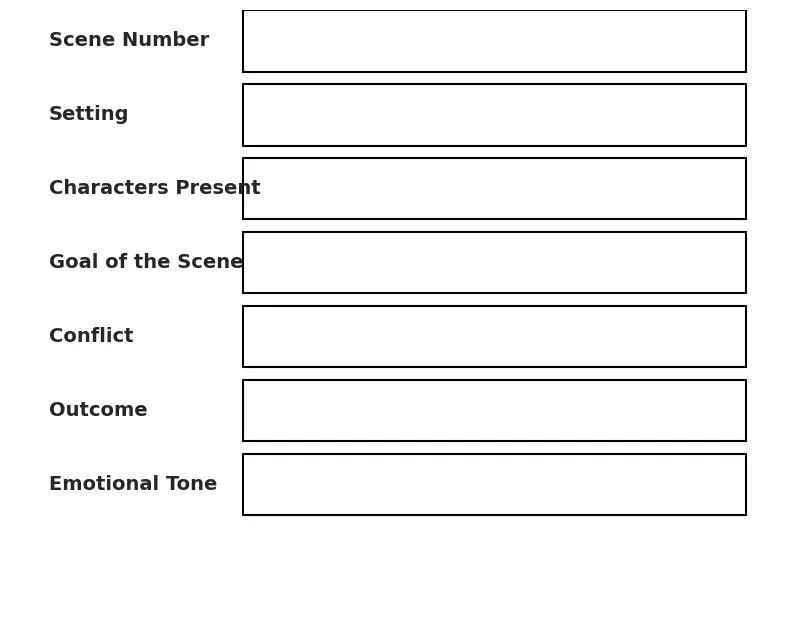
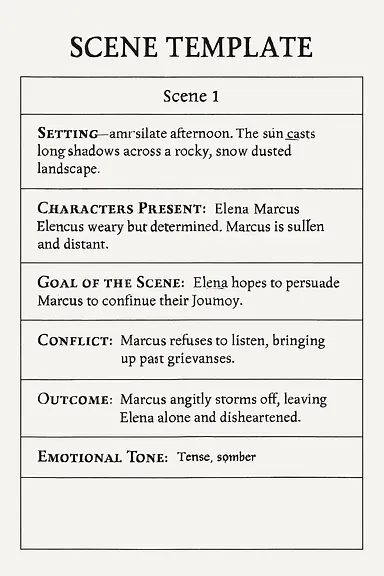
Chapter templates keep track of what happens in each chapter and how it moves the story forward.
Chapter Number
Title (optional)
Summary of Events
Character Development
Plot Progression
Foreshadowing or Clues
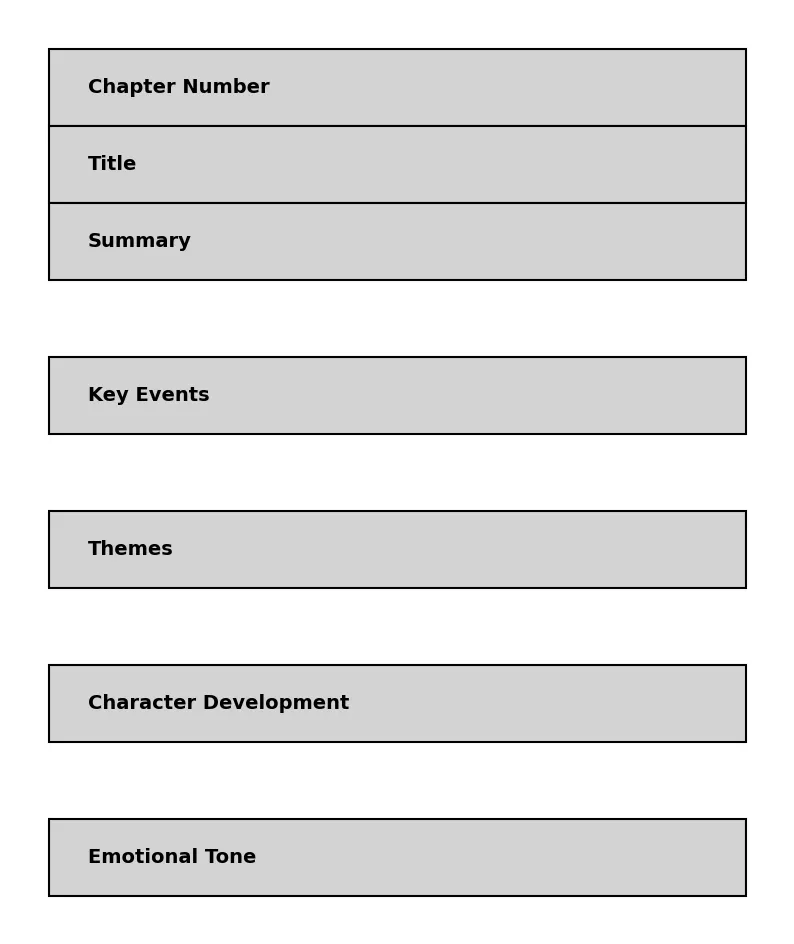
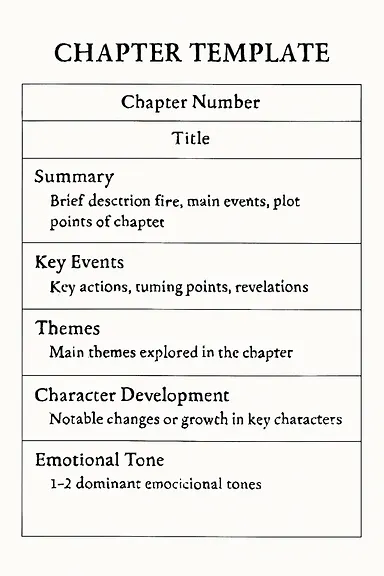
Worldbuilding templates are important for fantasy, sci-fi, or historical fiction.
Geography
Politics
Religion
Technology
Social Norms
Languages
Magic System (if applicable)
Important Locations
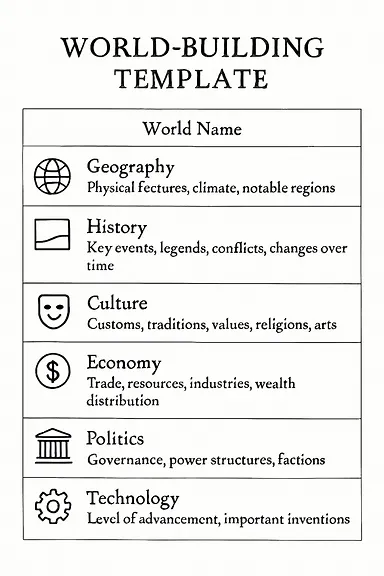
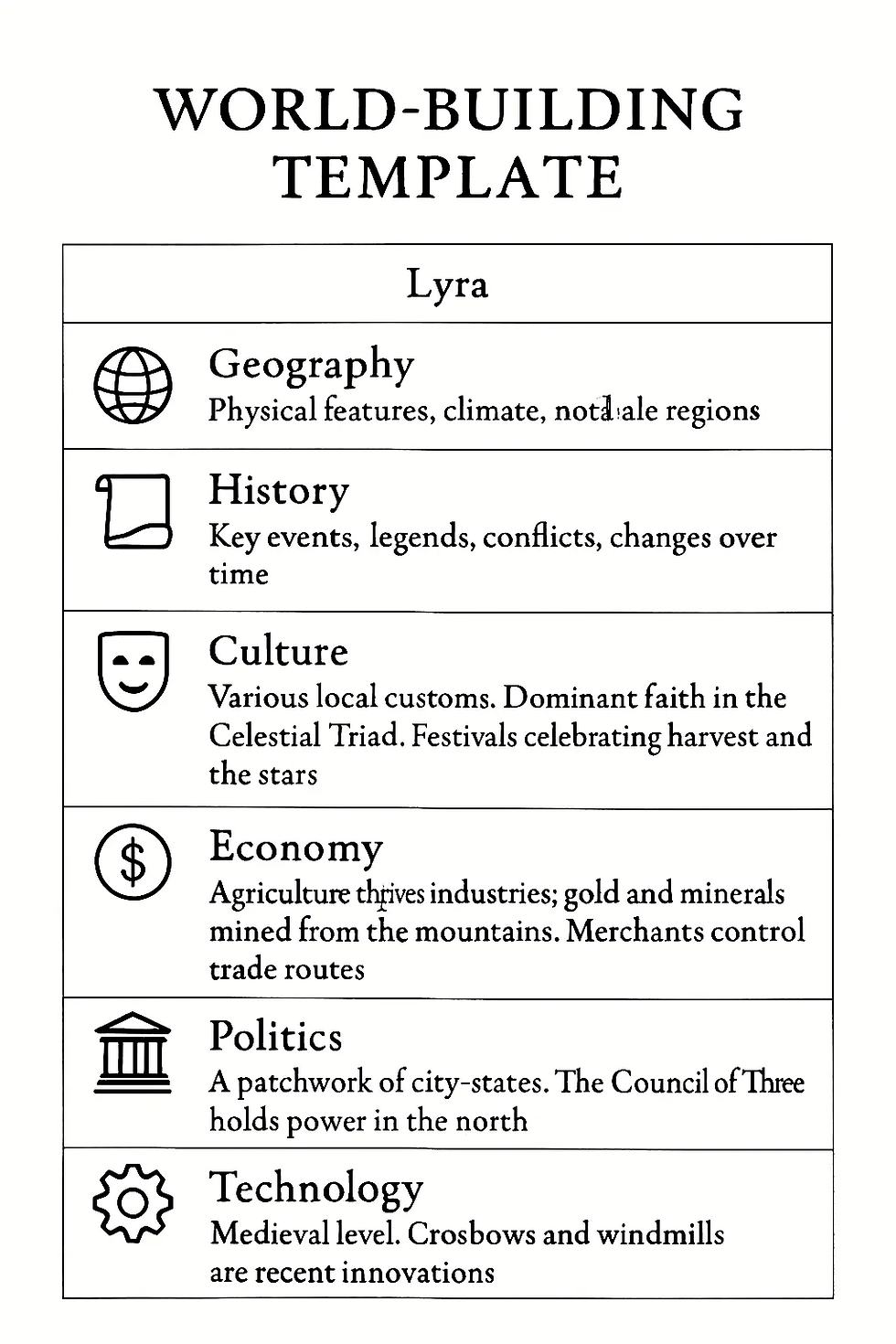
Building Templates
Start simple. Don’t overcomplicate it.
Use headings and bullet points. Makes it easier to scan.
Leave blank spaces. You’ll fill them in as you write.
Test your template. Try it with one story and adjust as needed.
Save a master copy. Duplicate it for each new project.
Templates are a support system. They help stay organized, write faster, and keep stories consistent.



Comments